Level By Level
‘Super Mario Odyssey’ Level by Level: Kingdom Ranking
After diligently playing and writing about Super Mario Odyssey kingdom-by-kingdom, it’s time to siphon my thoughts down into the shallow, quantifiable, clickbaity realm of ranking. Below is my list of Odyssey’s kingdoms from worst to best. I devised the final ranking based on two ephemeral and subjective criteria: how good it is and how much I liked it. Feel free to praise or critique my list in the comments, but feel even freer to post your own list. Opinions are just opinions and I’d like to see how my thoughts and feelings compare to your equally valid ones! And check out longer analyses here.
On the whole, this purported “Great Gig in the Sky” is “Eclipse”-d by every other course. “Speak to Me,” dear readers, but I think we can all agree, “Us and Them,” that Dark Side is worth neither our “Time” nor “Money.” Its overused monochrome deprives you of “Any Colour You Like,” while its most frustrating secret area demands Mario stay “On the Run” without ever teaching the player how. When all is said and done: “Brain Damage.” The moon has another Dark Side and it’s way way better than this sucker. Spend your time with that one instead.
As the home of little more than a story beat, Cloud Kingdom doesn’t have much to offer. But given its limitations, its moons are fairly enjoyable and its atmosphere is pleasant enough. In some regards, it’s an interesting counterpoint to Odyssey’s largest kingdoms, but is mostly little more than an inoffensive blip on the player’s radar.
15. Darker Side
On the whole, Darker Side is really just one tough, lengthy, celebratory challenge meant to act as a summarizing capstone to all that came before. For the most part it succeeds, and most of the ways it doesn’t succeed signal Odyssey’s flaws rather than just this course’s. As the most final of final courses, it might not be quite as tough as Grandmaster Galaxy from Super Mario Galaxy 2 or Champion’s Road from Super Mario 3D World, but it does an equally fine job of funneling the game’s spirit into one last hurrah.
Cap Kingdom starts Super Mario Odyssey off with an atypical barebones tutorial area that methodically does its job but lacks the diversity, depth, and identity of a strong stand-alone course. Although I appreciate the course’s striking change of pace and tone for a Mario opening act, it quickly grows as monotone as it is monochrome. Attempting to fill the gap between the an open hubworld entrance like Peach’s Castle Courtyard and a fully-featured first course like Bob-Omb Battlefield, Cap Kingdom occupies an awkward middle-ground, unsure of its role after the player’s first brief visit. Still, its focus on clarity and a superb first capture balance out its overall wantonness and slew of freebie moons to form a decent course that does its duty but falls far short of its potential.
Snow Kingdom’s warm village and intriguing weather effects, though charming, don’t amount to much in the face of disappointing moons, implementations of captures, and integrations of theme. Although slippery controls, snow coverage, limited visibility, freezing water, and heavy winds all provide opportunities for meaningful gameplay twists, they are largely ignored in favor of repeated objectives that ask the player to confront the course as a run-of-the-mill scavenger hunt.
Though it features many memorable moments, Moon Kingdom is a bit of a mixed bag. On one hand, it contains a lot of unremarkable moons, a bland exterior, and several shallow, underused, or poorly integrated captures. On the other, it sends the game off on a fitting note with several narrative curve balls and its antigrav twist. Though the initial awe of antigrav wears out its welcome due to a lack of meaningful integration, the small size of the course and variation between above-and-below ground segments makes for a unique bookend with diminishing returns, focused more on spectacle than depth or longevity.
On the whole, Wooded Kingdom is probably my least favorite of Odyssey’s large kingdoms. It’s indistinct, difficult to navigate, and thematically shallow. On top of these issues, unlocking of certain moons at certain times is particularly frustrating, since it can be tough to know when you’ve scoured every crevice of the course, and doing it repeatedly in search of a poorly-named, newly-spawned, well-hidden moon can be dispiriting. That said, the Uproot capture is among the most mechanically interesting in the game, providing a simple but one-of-a-kind ability integrally tied to the course’s design. And Deep Woods, though obscure and perhaps under-telegraphed, is the kind of subtle, expansive surprise other courses could benefit from. Though it doesn’t rise to the heights it strives for, Wooded Kingdom is home to some clever concepts more captivating than the level itself.
Odyssey strives so hard to prove its openness and depth that it often undermines itself. Whether boasting about its artificially high number of captures, scattering moons nonsensically, or cramming too much into a space to make optimal use of it, Odyssey betrays its ancestors through its overindulgence. These flaws show up in nearly every kingdom, but Cascade Kingdom’s small size emphasizes the extent to which it can impact the player’s relationship with the level. And it was playing Cascade Kingdom for the first time that made me wonder if Super Mario Odyssey was actually the spiritual successor to Super Mario 64 it was advertised to be, or an open-world evolution of Super Mario 3D World struggling to unfold itself onto a broader canvas.
As a whole, Seaside Kingdom’s low lows weigh down its highpoints to form an unremarkable course. Of course, the narrative portion is enjoyable, the boss fight is spectacular, the art is gorgeous, and the Gushen capture is among the deepest and most satisfying in the game. But the course’s poor integration of its themes, lack of other meaningful captures, shoddy underwater design, and massive collection of substandard moons can make much of the experience a forgettable slog. Like its beached snail residents, Seaside Kingdom might seem chill and amusing at first, but it’s also slow-going, unambitious, and bogged down by a lack of purposiveness.
Overall, Ruined Kingdom is surprisingly memorable given its tiny stature. Little more than a boss arena at heart, its strong tone and atmosphere craft an equally strong identity. And although there is little for the player to engage in, almost all of its admittedly measly ten moons seem deliberately placed and considered. Though it can’t measure up to fully-fledged kingdoms, Ruined Kingdom does as much with two small platforms as one could reasonably expect.
With a totally novel art style, a ton of course-specific moons, thematically unified interiors, and several captures, Luncheon Kingdom swings for the fences and hits a double. Its themes are underutilized but it still understands the importance of integrating them into the level’s design. Its captures are sometimes similarly shallow, but they generally suit the stage and add more than they subtract. The art style can make moon glow and parts of the stage hard to spot, but it is also the most aesthetically distinct course in the game. It’s little wonder this kingdom is among the most divisive — it’s brilliant, flawed, and self-confident. But for my money, it belongs somewhere in the middle-to-high end — an above average course that sticks out from the pack in its strengths, weaknesses, and unabashed flair.
All considered, Bowser’s Kingdom is among the strongest courses in the game, not because it exceeds at any one aspect but because its quality is consistent in design, captures, and moons. Though anomalous in several ways (not the least of which is its Galaxy-like level design that tethers disparate chunks of the level to each other), it succeeds where many courses falter, especially in its distribution of moon types, moon locations, and meaningful integration of its unique captures.
While a second, more deliberate playthrough changed my opinion of Sand Kingdom for the better, Lake Kingdom remains a personal favorite. Admittedly, sections of it are slightly bland or overly simplistic and it could use another area or two. Additionally, many of its moons are under-inspired and few feel unique to Lake Lamode. However, Lake Kingdom still establishes a strong sense of place through its elegance and water-based gameplay. Little touches like glistening water effects and rainbow schools of fish go a long way toward making Lake Kingdom feel like an easygoing mid-size palette cleanser between the more urgent and imposing Sand Kingdom and Wooden Kingdom. It’s a slow-burning and steadily-dazzling kingdom that marks a graceful high point.
- Sand Kingdom
The first time I played through Sand Kingdom, I felt torn. While I enjoyed its captures, incorporation of narrative, and most of its moons, I also felt it was weighed down by its massive scale, obnoxious stumble-upon moons, and underutilization of its themes. But going back to it the second time, with full knowledge of where the tedious moons lie and what portions of the map deserve my time, I hold it in higher regard. It’s not perfect, but so far I think it is the only course that feels built around around Super Mario Odyssey’s lofty ambitions of depth and breadth. Sand Kingdom is the moment when Odyssey spreads its wings, and takeoff is smoother than the two prior courses had me anticipating.
As a whole, Mushroom Kingdom is among the strongest courses in the game due to its unforgettable setting, plentiful fan service, and perfect post-game atmosphere. Although more course-specific stars, interesting Toadette stars, and specialized Yoshi abilities could have been a major asset, the course admirably eases the player into the post-game while also transporting them back to 1996.
I’ll stop blushing and just admit it — I’m a fan of Lost Kingdom. Of all the courses in the game, this is the one that most resonates with me. It was intimate and enchanting. It was the one that most made me feel like a kid playing Super Mario World, wondering if life could get any better. Whether or not you’re feeling my less critical perspective on this course, I hope you found a similarly special place somewhere along your odyssey. I imagine that sense of wondrous delight is one of the reasons some of us come back to this series time and time again.
Metro Kingdom is at once Super Mario Odyssey’s most bizarre and most quintessential course. Its heavy focus on platforming and wholehearted celebration of Mario lore feel like nods toward tradition, while the uncanny setting and strain toward realism make it wholly unique. While these two facets of Metro Kingdom might initially appear contradictory, they synergistically contribute toward the game’s obsession with a grand sense of outward and inward journeying. Though not without its faults (like the jump rope mini-game, underused captures, and linear narrative portion), Metro Kingdom is the most singular, strange, and energetic course in Super Mario Odyssey.

-

 Features3 weeks ago
Features3 weeks agoDon’t Watch These 5 Fantasy Anime… Unless You Want to Be Obsessed
-

 Features3 weeks ago
Features3 weeks ago“Even if it’s used a little, it’s fine”: Demon Slayer Star Shrugs Off AI Threat
-

 Culture3 weeks ago
Culture3 weeks agoMultiplayer Online Gaming Communities Connect Players Across International Borders
-
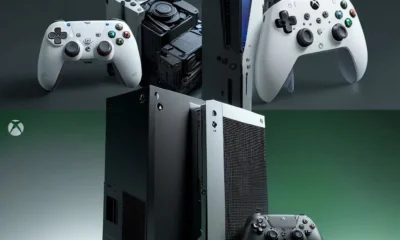
 Features1 week ago
Features1 week agoBest Cross-Platform Games for PC, PS5, Xbox, and Switch
-

 Game Reviews3 weeks ago
Game Reviews3 weeks agoHow Overcooked! 2 Made Ruining Friendships Fun
-

 Guides4 weeks ago
Guides4 weeks agoMaking Gold in WoW: Smart, Steady, and Enjoyable
-

 Features2 weeks ago
Features2 weeks ago8 Video Games That Gradually Get Harder
-

 Game Reviews3 weeks ago
Game Reviews3 weeks agoHow Persona 5 Royal Critiques the Cult of Success
-
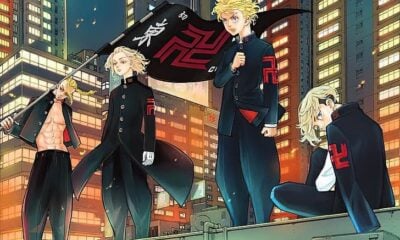
 Features2 weeks ago
Features2 weeks agoDon’t Miss This: Tokyo Revengers’ ‘Three Titans’ Arc Is What Fans Have Waited For!
-
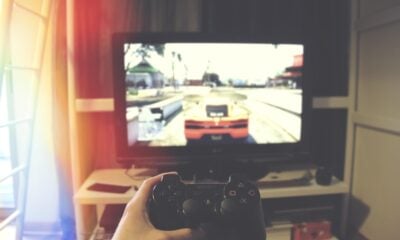
 Guides2 weeks ago
Guides2 weeks agoHow to buy games on Steam without a credit card
-
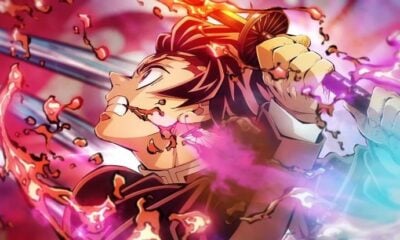
 Features1 week ago
Features1 week agoThe End Is Near! Demon Slayer’s Final Arc Trailer Hints at a Battle of Legends
-
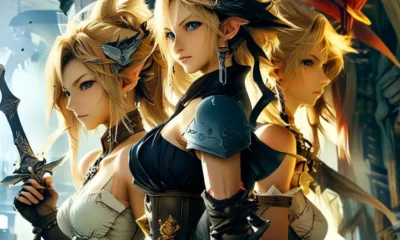
 Game Reviews1 week ago
Game Reviews1 week agoFinal Fantasy VII Rebirth Review: A Worthy Successor?



















